TUAMOTUS
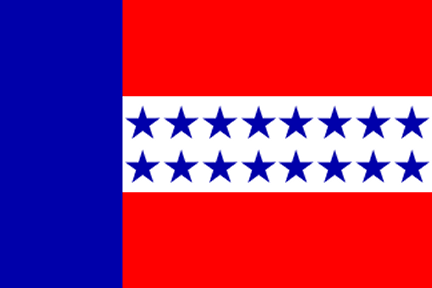
The Tuamotus are one of French Polynesia’s four archipelagos. They are a chain of atolls – the largest chain of atolls in the world. They form an arc stretching 1,000 miles from the southeast to the northwest and spanning 150° of longitude.
Politically, the Tuamotus also include the Gambier Islands. The Gambiers, however, are geologically unrelated to the Tuamotus.
Like the rest of French Polynesia, the pre-European history of the Tuamotus was unwritten, and most of it has been lost to time. Although geologists have determined that the Tuamotus are the oldest of French Polynesia’s archipelagos, archaeologists have determined that they were not the first settled (the Marquesas were).
Like the other French Polynesian archipelagos, the Tuamotus had early contact with European explorers starting in the 16th century, but they remained within the sphere of influence of Tahiti’s Pomare dynasty until the French overthrew the dynasty and annexed the islands. The Tuamotus also suffered imported disease, missionaries, and eventual colonization.
The Tahitians previously called the islands the Paumotus which means Subservient Islands. An island delegation convinced the French to change their name to Tuamotus which means Distant Islands.
The Tuamotus have also been called the Dangerous Islands because of their dangerous currents and reefs. They have claimed many vessels throughout the years, and they still occasionally claim one that is carelessly navigated. This archipelago requires careful navigation.
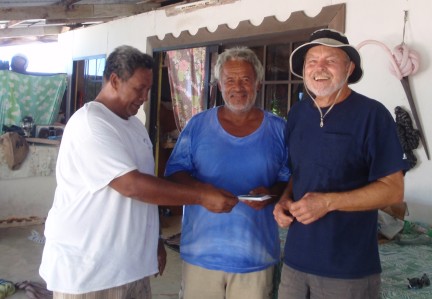
Bud and ‘Young’ Xavier

Lunch at the airport
Two well known historical events occurred in the Tuamotus in the 20th century. One brought fame; the other infamy.
Fame was brought by Thor Heyerdahl who believed that French Polynesia was populated by Peruvians from the east rather than Polynesians from the west. In 1947, he set out on a raft, the Kon Tiki, from Peru. He drifted 4,300 miles over 3 ½ months, and he made landfall on Raroia in the Tuamotus.
Infamy was brought by the French government by their nuclear testing in the southeast Tuamotu islands. From 1963 through 1996, they performed 175 nuclear tests – both atmospheric and underground. The last 8 were after the worldwide moratorium on nuclear testing. In addition to contamination, they created much ill will among the native islanders and world wide. The islands of Mururoa and Fangatauta remain off limits, and there is still a heavy French military presence around them. And many travelers express their disdain by refusing to visit any of French Polynesia.
The Tuamotus are geographically the oldest of French Polynesia’s archipelagos. They are comprised of 76 islands with a total land mass of 343 square miles. Seventy three of these are true atolls with lagoons ringed by coral reefs. Some are unbroken circular reefs, and some have passes between islets. One atoll – Makatea – is a raised atoll. There are two small islands that are not atolls at all. Thirty of the atolls are uninhabited, and 46 have some population.
There are no lakes or rivers, so all water is by catchment. The average annual rainfall is 55 inches.
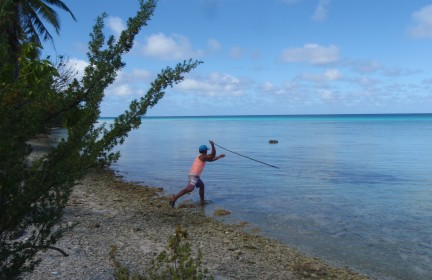
Fishing with Nui
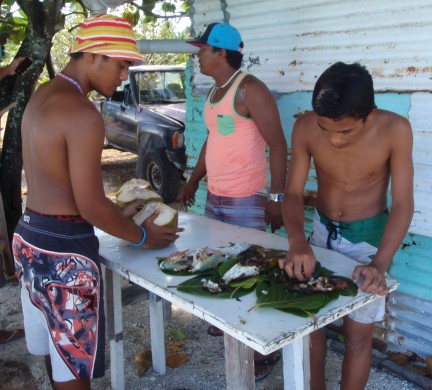
Lunch with Nui and family
The western Tuamotus were probably settled by Society Islanders some time between 200 and 700 AD. The population spread southeast through the archipelago. They shared a common culture and language with other Polynesians.
Today the people of the Tuamotus are called Puamotuns. They still share many characteristics with other Polynesians.
There are approximately 18,000 people on the 46 inhabited atolls. Populations are limited by food, water (catchment), and space.
Education is available for only the first six years. After the sixth grade, students must travel to Tahiti for further schooling. Not all go.
The Puamotuns speak their language – Puamotun – and most speak French. Many also speak Tahitian learned while attending school in Tahiti. Little English is spoken.
The Tuamotus were previously known for producing fine black pearls. However, there is very little pearl farming now. Most now live by government subsidized copra. The local diet is based on fish and coconut, and some islands produce little more than coconut. Some islands import nearly all their food.
Most islands have little, if any, income from tourism. And like all of French Polynesia, the local currency is the XPF.
The Tuamotus and Gambiers form one of five administrative divisions of French Polynesia. The Tuamotus are grouped in 16 communes. Government on the islands is low key and nonintrusive.
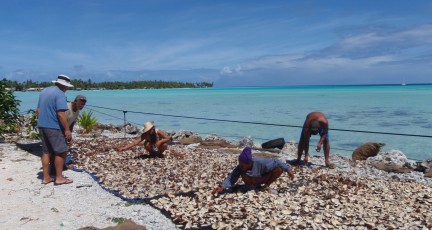
Drying copra at ‘Young’ Xavier’s
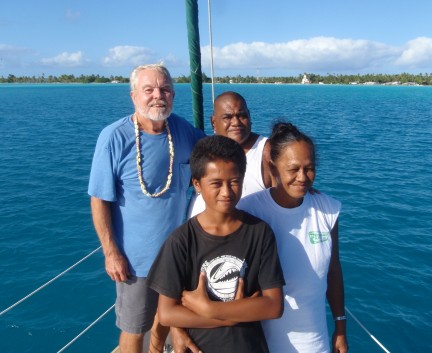
Eduard and family on Passage
We went to only one atoll – Kauehi. And Kauehi has only one village – Tearavero. This is a village that Bud visited 27 years ago when he sailed through here.
The entrance to Kauehi’s lagoon is a channel on the southwest of the atoll. The atoll is roughly kidney shaped, and the lagoon is approximately 11 miles by 15 miles for a total are of 1,200 square miles. The land mass is approximately 5 1/2 square miles.
The first thing we noticed was the contrast with the Marquesas. The Marquesas are steep and dense with foliage; the Tuamotus are low and almost bare. The Marquesas lack surrounding coral reefs; the Tuamotus are surrounded by reef. But Kauehi was very pretty and had clear warm water.
There were two boats anchored off the village when we arrived. There are many bommies all around, and we took our time finding a place where we would not swing in to one.
Before even going ashore, Bud noticed many changes since 1987. There were many more buildings than in 1987. There were trucks driving on the only visible road and a few streetlights along that road. We could see satellite dishes at many houses. Once ashore, he saw that the main road was now paved with concrete. We learned that internet service was available at the post office. And the population had increased from 35 to almost 200.
We went ashore and walked through the small village. Many memories for Bud. We noticed a new grocery store and went in to see what they had. Bud sought out the English-speaking owner, Fred, while Nita browsed the shelves. She heard Bud and Fred talking, and she thought she detected a Hawaiian accent. So she asked Fred where he learned to speak English, and he replied that he learned on the Big Island of Hawaii. Fred became a good friend to us.
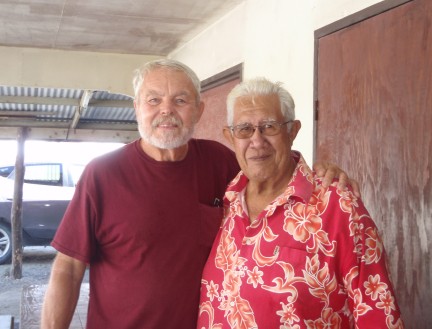
Bud and ‘Old’ Xavier – aka Taverio
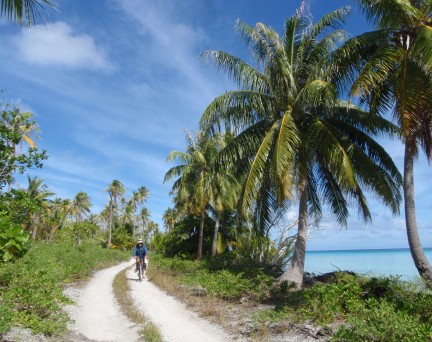
Before the flat tire
We had printed photos from Bud’s visit here in 1987, and we sought out some of the people in the photos. Word of the photos quickly spread throughout the village, and we were suddenly celebrities! Everyone wanted to see the photos, and many wanted copies. We printed copies until we ran out of photo paper.
We sought out a few of Bud’s friends from so many years ago. Villagers have both Tahitian names and French names, and Bud knew them only by their French names. That created a little confusion, but we got through it. He wanted to find two Xaviers – ‘old’ Xavier (only five years older than Bud) and ‘young’ Xavier – Eduard, Andre, and Andrea.
Old Xavier now insists on being called by his Tahitian name, Taverio. We spent time with him and his lovely wife, Tanya. Young Xavier married a lovely woman, Joanna, 23 years ago, and they have a son whom enjoyed speaking English with us (he is learning in school and doing well). Eduard married Debra, and they have a son, William. We had a wonderful dinner at their house. Andre has moved to Tahiti. Andrea still has a small store, and we met her grown son, Marcel.
We also spent time by ourselves exploring the island. We took our bicycles ashore, and we left them in Fred’s store at night. We rode our bikes out to the airport on the north side of the atoll. We bought a baguette to eat along the way, and Fred gave us cold coconuts to drink with it. This is the only time we have ridden bicycles on a tarmac. We also rode our bikes out the deserted south shore of the atoll, and Bud got a serious flat tire about one hour away from the village. We started walking our bikes back toward the village, and a truck stopped with two men in front and three pre-teen and teenage boys in back. They offered us a ride back to the village, and that is how we met Nui and his family.
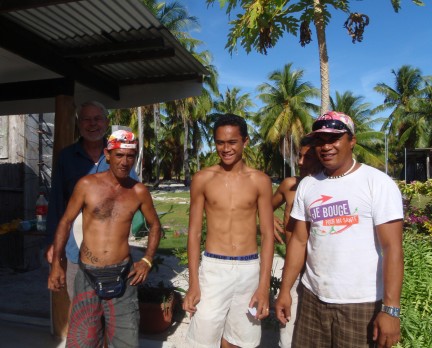
Nui and family

Bud and Hau’Kai on Passage
Nui is originally from New Caledonia, but he has lived on Kauehi for twenty-some years. His oldest son, 15 year old Kai’hau, spoke a bit of English, and he offered to take us to their house and repair Bud’s tire.We accepted the offer. They served us fresh fruit juice and lit a fire to keep the mosquitoes at bay while Nui’s brother-in-law did the tire repair. They refused any payment (we later returned with a few beers). We invited Kai’hau out to the boat the next day, and he accepted. He had never been on a cruising boat before, and he enjoyed it immensely! He is very bright, and he was like a sponge soaking up everything we told him. He invited Bud to go fishing with his family in a few days, and Bud eagerly accepted.
They fish with three-pronged spears. They drive their truck along the dirt road near the water (the road where they found us broken down), and they stop when the see fish in the shallows. They throw their heavy spears. They cooked their catch over a fire of coconut husks on a piece of corrugated aluminum that they found. They drank coconuts. Bud really enjoyed himself and invited the entire family out to the boat the next day.
Nui and three boys came out. He brought Kai’hau, the younger brother Dylan, and their cousin Bradley. They seemed to have a good time.
We also had Eduard and family out as well as Young Xavier and family. We felt welcome in the village, and we tried to make them feel welcome in our home.
We took the dinghy around the lagoon a bit. We saw people throwing nets in the shallows, and we were surprised to see that they were all women. We also saw a few sharks in the shallows.
After two weeks, it was time to say goodbye. Some villagers cried. This had been a very special time and a wonderful experience, so we were not sad. When Bud said ‘goodbye’ to these friends 27 years earlier, he never expected to see them again. This visit was an unexpected bonus for Bud, and it showed Nita why this was such a special place in Bud’s heart.
We left there laden with gifts on August 16. We will always remember our friends on Kauehi.
Sail with us from the Tuamotus to Society Islands
or jump ahead to the Society Islands